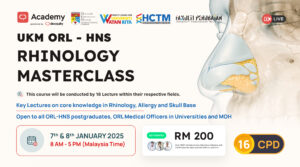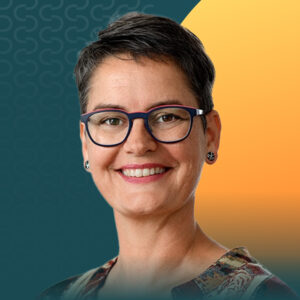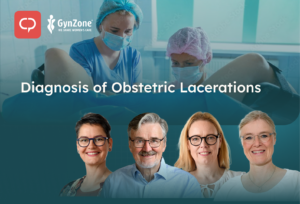
Diagnosis of Obstetric Lacerations
Diagnosis of Obstetric Lacerations
Expertly diagnose obstetric lacerations with our comprehensive course for healthcare professionals.

Overview of the Diagnosis of Obstetric Lacerations course
Dive deep into Obstetric Laceration Diagnosis in this comprehensive course. Learn crucial skills for precise assessment and care, enhancing patient outcomes.
This training is intended for the following participants.
Obstetricians looking to enhance their proficiency in diagnosing and managing a wide spectrum of obstetric lacerations, from common tears to complex cases.
Midwives seeking advanced knowledge and skills to ensure optimal postpartum care and recovery for their patients.
Physician assistants aiming to excel in the evaluation and treatment of obstetric lacerations to improve patient outcomes.
Nurse practitioners specializing in obstetrics who want to broaden their expertise in identifying and addressing perineal tears.
Gynecologists interested in expanding their understanding of perineal and labial injuries encountered during childbirth.
Medical residents pursuing specialization in obstetrics and gynecology, keen to acquire proficiency in diagnosing and treating obstetric lacerations.
Obstetric nurses looking to enhance their clinical skills in assisting with the assessment and care of perineal tears.
Medical students interested in gaining foundational knowledge and skills related to obstetric lacerations as part of their medical education.
What will you learn from this course?
Module 1: Anatomy and Examination
In this course, you'll delve into crucial aspects of obstetric laceration diagnosis, including understanding the anatomy and examination techniques, mastering medical terminology, perfecting the positioning of the woman for assessment, and becoming skilled in suture tampon application. These skills are vital for healthcare professionals to ensure effective patient care.
Module 2: First degree tear
This module focuses on various types of obstetric lacerations, from first-degree tears with detailed illustrations and classification, to addressing superficial tears in the labia, torn labia, and large V-shaped tears in the labium. We also delve into first-degree perineal tears, equipping healthcare professionals with comprehensive knowledge for accurate diagnosis and treatment.
Module 3: Second-degree Perineal Tear
This module extensively covers second-degree perineal tears, including classification, labial involvement, edema, deep labial tears, rectovaginal fascia extension, perinysium defects, and intact perineal skin tears, ensuring healthcare professionals are proficient in diagnosis and treatment.
Module 4: Episiotomy
In this module, we focus on episiotomies, offering detailed illustrations and classification. We explore various cases, including mediolateral episiotomies in Case 1 and Case 2, as well as complex mediolateral episiotomies. This comprehensive approach empowers healthcare professionals with expertise in managing episiotomy procedures.
Module 5: Third-degree Perineal Tear
This module is dedicated to third-degree perineal tears, with comprehensive illustrations and classification. It covers specific cases such as 3a tears with rectovaginal fascia involvement, 3a tears without it, 3b tears with Allis forceps, 3b tears with complete EAS tear, and missed 3b tears. We also delve into the intricacies of 3c third-degree perineal tears. Healthcare professionals gain in-depth knowledge for precise diagnosis and treatment.
Module 6: Fourth-degree Perineal Tear
This module explores fourth-degree perineal tears, providing comprehensive illustrations and classification. It includes discussions on standard fourth-degree tears, as well as unique cases like rectal buttonhole tears behind intact perineal skin and the challenges of diagnosing missed fourth-degree perineal tears. Healthcare professionals gain vital insights for accurate assessment and management.
What the participants said about this course?
I am a regular user of online training and as such, I can only recommend GynZone's courses to all health professionals who work in the area of obstetrics and want to evolve their knowledge.

Carla Vilaca
The combination of the three types of video gives an excellent insight into the anatomy of the pelvic floor as well as preparing for suturing in reality.

Rune Lykke
GynZone has been created by the country’s leading experts and adheres to international guidelines. I can count on a highly professional standard

Negin Nasrallah
Know your instructors

Sara Kindberg
Sara Kindberg, a midwife since 1999 across multiple countries, specializes in perineal care, with a focus on surgical repair. Her research identified a need for hands-on training among midwifery students and colleagues, leading to the creation of GynZone.com, an online learning platform for birth professionals and students. She received recognition as “Female Entrepreneur of the Year” in 2011 and pioneered a midwifery-led pelvic floor unit at Aarhus University Hospital. This innovative approach was commended by the WHO as a model of excellent clinical practice. GynZone offers online learning for diagnosing and surgically repairing obstetric lacerations.

Karl Møller Bek
Karl, a co-founder of GynZone and a Scandinavian specialist in anal sphincter injury reconstruction, completed his PhD Thesis on diagnosing and treating anal sphincter trauma in 1993. With 40 years of experience in anal sphincter reconstruction, he played a pivotal role in the narrative of early secondary repair for 3rd and 4th degree tears at Aarhus University Hospital in Denmark. Furthermore, he has made significant contributions to the development of 3D animations featured in GynZone's e-learning programs for midwives and doctors.

Peggy Seehafer
Peggy has 30 years of clinical experience in suturing and evaluating healing in the perineum after vaginal birth, and has worked as an editor of the German Journal of Midwifery. She works clinically and teaches across multiple countries.

Marianne Glavind-Kristensen
Marianne is an experienced urogynecologist and expert in the field of pelvic floor reconstruction. She is the Director of Gynecology at Aarhus University Hospital in Denmark, and works as a Consultant at the interdisciplinary Pelvic Floor Unit where urogynecologists, urologists and colo-rectal surgeons collaborate to create a “one-stop-shop” for their patients.
Frequently Asked Questions







